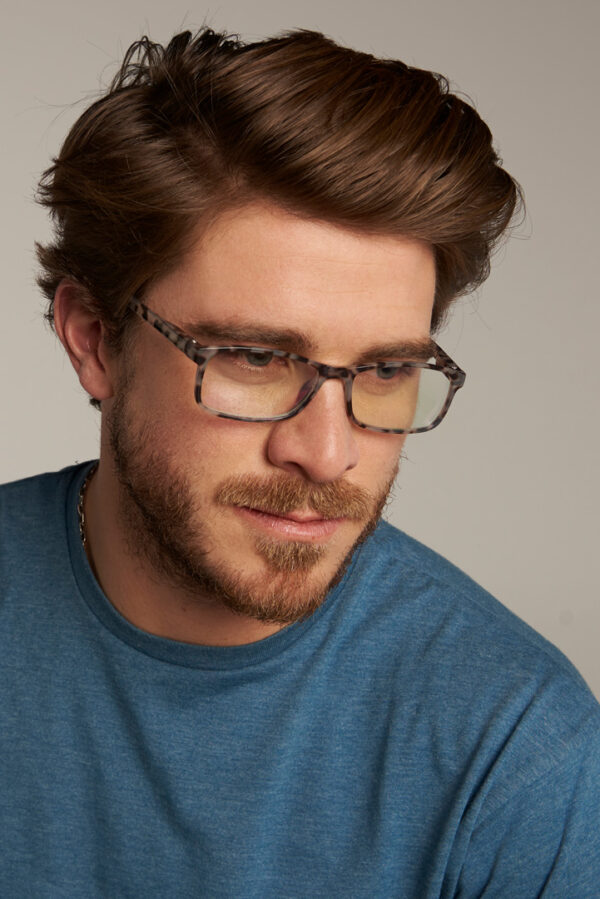Why does it occur? Using the lens of our eye as a comparison, it can be compared to a camera lens, where when taking a photo, the lens helps us focus on the object and see it more clearly. Our lens is responsible for helping us focus on nearby objects, having a varied shape that adapts to the proximity of the object we are looking at. This condition usually occurs in people between the ages of 40 and 45, but is rare in young people, as it is caused by aging itself, causing the natural degeneration of the eye.
How can it be prevented? Presbyopia cannot be prevented because it is linked to the degenerative process of the eye. Like other parts of our body, it evolves with age. Therefore, from a certain point on, we all suffer from presbyopia and, in fact, it affects more than 90% of people over 45 years of age.
It is therefore important to have your vision checked regularly (annual check-ups), especially after the age of 40, when the usual symptoms of tired eyesight usually appear. At this age, other eye diseases that are common in older people also begin to develop. Presbyopia develops gradually. After the age of 40, you may notice the following signs and symptoms for the first time:
1. A tendency to hold reading material farther away to see the letters more clearly
2. Blurred vision at normal reading distance
3. Eye strain or headaches after reading or doing detailed work
4. Difficulty focusing on objects at close distance (less than 1 m)
5. Need to move the book, cell phone, etc. away to be able to see better
6. Feeling that the letters in a text are “dancing” or blurry
7. Headache when staring at something while reading for a long time
8. Eye fatigue (redness, dry eyes, itching, gritty sensation, tearing, etc.), especially at the end of the day or in low light conditions
– Monofocal : These are only intended to improve close vision and are usually initially used to perform specific precision tasks, such as reading or sewing.
– Bifocals: combine distance vision (upper area of the lens) and close vision (lower area).
– Occupational: In this case, the upper part of the glass is used for vision at intermediate distances and the lower part for close distances. They are especially suitable for people who spend many hours in front of the computer.
– Progressive: they progressively change the graduation to correct both near, intermediate and far vision.
For this reason, as reported by the newspaper El Confidencial in its article “They discover that presbyopia cannot be prevented: goodbye to the myth of not wearing glasses”, referring to the use of glasses in presbyopia, there is still no definitive cure for this, but the most appropriate way to alleviate its effects is to wear glasses. Although at first it was considered to delay the use of glasses in this type of illness, studies have shown that their use both in the early stages of the manifestation of the illness helps prevent it from developing over time, leading to greater difficulty when focusing on objects.
Dr. Julio Maset gives a series of tips for detecting and treating this vision problem. Firstly, be alert to the appearance of any symptoms. That is, difficulties in seeing close-up images or reading, as well as eye strain or headaches after performing prolonged tasks involving close vision, may be symptoms of presbyopia.
It is also recommended to adopt good habits when working with the computer, remembering that it is normal to feel eye fatigue, for which it is recommended to take visual breaks every twenty minutes, pay attention to aspects such as brightness, screen position and reading distance, enlarging the font size on the screen and maintaining good lubrication of the ocular surface, using artificial tear solutions.
Other tips include using the appropriate optical correction, visiting the ophthalmologist from time to time (especially after age 40), and getting the right information if you decide to have surgery.
For all these reasons, if you have symptoms of tired eyes, such as difficulty focusing on objects or product labels when you go shopping, do not rule out the use of glasses, since their use will help the lens to maintain its youth (even if you are already a few years old and cannot fight against it) and prevent it from getting worse and ending up causing greater ailments such as those that it brings with it.




